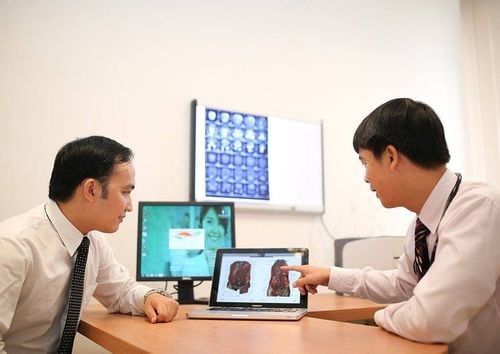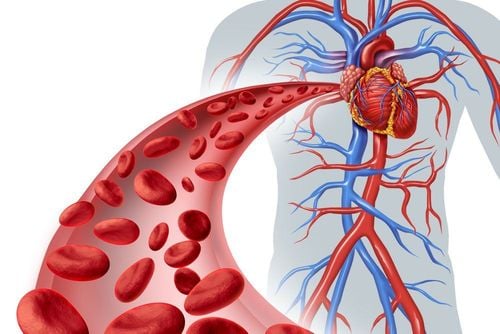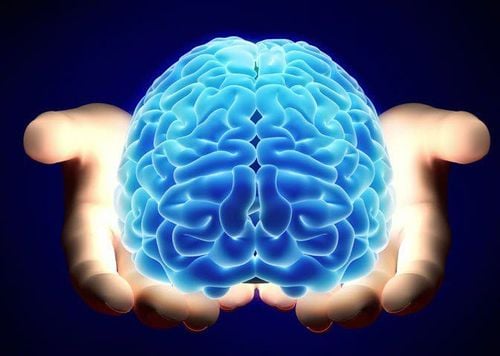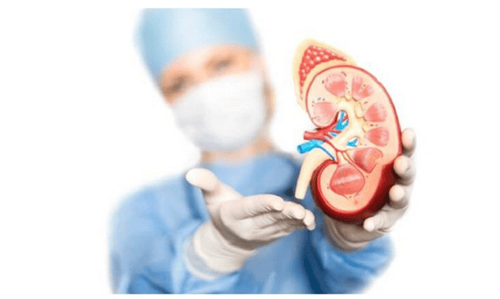This is an automatically translated article.
The article was professionally consulted by Specialist Doctor II Ho Viet Le Diem - General Internal Medicine - Department of Examination & Internal Medicine - Vinmec Central Park International General Hospital.Medical history is an important part of a patient's diagnosis and treatment. How to ask for medical history during physical examination is both a skill and an art, providing all the information you need to know about the patient. To do so, the physician needs to regularly cultivate and have full knowledge and experience in the practice of daily medical examination.
1. What is the medical history?
Medical history is the information surrounding the patient's reason for coming to the doctor. This is an important stage in the medical examination and treatment process at a hospital or any other medical facility.The process of asking for medical history takes place in the order of steps:
Checking in for the patient to be admitted to the hospital Taking the history and history by asking the patient Clinical examination Specifying the laboratory investigations Diagnosis and In the above process, a doctor who wants to give good treatment needs to make a correct diagnosis, and if he wants to make a correct diagnosis, he needs to know how to ask the patient, examine the patient properly, and request the paraclinical staff. suitable.
The purpose of the medical examination is to detect subjective symptoms, also known as functional symptoms. These are the symptoms provided by the patient himself to the doctor. Therefore, only the patient knows and feels, so it is difficult for the doctor to assess whether it is real or not, describing it correctly or not, how severe it is. Therefore, in order to collect highly accurate information, doctors need to practice good communication skills, empathize with patients; at the same time, it is necessary to know how to select the recorded information, arrange and present it in a scientific, reasonable and objective manner.

Tiền sử bệnh án là những thông tin xung quanh lý do đến khám bệnh của bệnh nhân
2. How does the process of taking medical history take place?
In order to ask for a comfortable, natural medical history and exploit the necessary information for diagnosis and treatment, the doctor needs to carry out the process of asking for medical history taking place in turn according to the following steps: :Step 1: Greeting, introducing and getting to know the patient
Before starting the conversation, the doctor needs to skillfully construct polite greetings to get to know the patient. From there, the patient has a feeling of trust, ready to provide information to the doctor.
Through common communication sentences, the doctor can make brief judgments about the patient's life, intellectual level, culture, customs and habits. This will be the link that helps the doctor ask the right questions to take the appropriate medical history step by step.
To do this, the doctor first greets you with a friendly attitude. Practice warm, friendly, close verbal communication, both in eye contact and body language. Pay attention in the use of words for patients from ethnic minorities, remote areas.
Step 2: Exploiting information about the disease
The extraction of information about the disease includes the following components
Reason for admission: This is the most legitimate reason why the patient goes to the medical facility and asks help from medical staff. In the entire information extraction section about the disease, the reason for admission is the most important foundation because through it, the doctor will orient the information that needs to be further exploited.
The doctor needs to know whether the reason for the patient's admission to the hospital in each case is from the patient or provided by the family member or because of the reason for referral to briefly assess the severity of the disease. At this point, recording the diagnosis of the frontline and the initial management is necessary.
History History is the progress from the first symptoms of the disease to the time of admission. Accordingly, the medical history is seen as a story revolving around the reason for hospitalization. At this time, in order to exploit information, doctors should create conditions for patients to freely present their own ideas. Physicians can assist with open-ended questions that help direct or elicit the necessary information but make sure not to interrupt their content.
In addition to the medical or surgical condition, the appearance, characteristics and course of symptoms, the necessary information in the history building also includes pre-hospital management, what to do, What medication did you take and did you respond? These things help doctors better understand the disease condition as well as know the patient's attitude towards the disease; from which to develop a way to guide treatment and advice later. For patients who have been treated at the frontline, this information will be recorded in the referral form.
In case the patient is examined after a period of hospital stay and treatment, the doctor takes the medical history at this time, in addition to the events that happened before the hospital admission, it must also record the progression of the disease during the course of treatment. hospital stay and response to treatment. This will include remission or worsening of symptoms, important treatment modalities, and the patient's current state of mind.
Step 3: Extract information about prehistory

Đối với bản thân người bệnh, bác sĩ khai thác thông tin về tiền sử là những bệnh từng mắc và điều trị như thế nào, đáp ứng ra sao
For the patient himself, the doctor exploits information about the history of the diseases he has had and how to treat and respond. The infant's history also includes pregnancy and birth, immunizations, and age-related physical and mental development. For women, doctors need to pay attention to obstetric and gynecological characteristics such as pregnancy, childbirth, menstrual cycle.
For the patient's family, information about the health of blood relatives is very important in genetic diseases, autoimmune diseases, cardiovascular diseases, malignancies. If yes, how is the problem treated and what is the outcome.
Finally, information related to the patient's life:
Clinical epidemiology: Do people living in the same population have the same disease or not; What is the living environment, working environment, sanitary conditions, clean water, air, circulation to endemic areas... are information that doctors need to exploit, especially if they suspect an infectious disease. Lifestyle: What lifestyle and habits does the patient have, such as smoking, drinking alcohol, stimulants, exercising, doing sports, etc. Some important details are factors. If there is a risk, it is necessary to clearly exploit the amount and time of use. Socio-economic: This information can be assessed indirectly by the doctor during the visit. However, if the pathology may be closely related to these characteristics of the patient, the clinician should ask direct questions to guide appropriate treatment and short- and long-term prognosis.

Một số chi tiết quan trọng như là yếu tố nguy cơ thì cần khai thác rõ số lượng, thời gian sử dụng
3. How to synthesize and present medical history?
All medical history information that the doctor can exploit according to the above procedure will be synthesized, selected, sorted and presented by recording in the medical record. This is the document as evidence for the process of taking the medical history at the present time and plays a role in the diagnosis and subsequent treatment.In some cases, the doctor may reread the patient, ask for more information if it is not clear or the patient may need additional information. Finally, the doctor advises the patient or family member to continue to monitor the disease, if there is more information or the disease progression is different, it is necessary to notify the medical staff for timely recording and treatment.
4. What is the periodical health check at Vinmec?

Hệ thống Bệnh viện Đa khoa Quốc tế Vinmec triển khai các gói khám sức khỏe tổng quát và thực hiện các xét nghiệm cận lâm sàng phù hợp với từng đối tượng
On the other hand, doctors also always ask patients to be checked regularly to help maintain health. This is the importance of prevention, as a measure to reduce the number of patients requiring medical or surgical treatment, to get the right treatment quickly, to avoid any complications. Thus, with regular medical services, examinations and screenings, people will have the conditions and opportunities to live longer and healthier lives.
Because of the above benefits, with the goal of comprehensive health care, Vinmec International General Hospital System deploys general health checkup packages and performs paraclinical tests suitable for each patient. subject. Customers will be directly taken by the doctor to take personal and family medical history, measure blood pressure, body mass index, physical examination, perform screening tests as well as advice in each situation.
With a team of professional, highly qualified and experienced doctors, modern facilities, advanced testing machinery system, the periodic health check-up at Vinmec deserves to be an address. Reliable, world-class quality medical care for everyone and every family.
Doctor Ho Viet Le Diem has more than 10 years working in the Department of Resuscitation - Cardiac Surgery at Cho Ruong Hospital with the position of cardiologist and Open Heart Resuscitation. And has more than 03 years as a General Internal Medicine doctor at Family Medical Practice in Ho Chi Minh City. Currently, Dr. Diem is working at the Internal Medicine Department - Vinmec Central Park International General Hospital.
Please dial HOTLINE for more information or register for an appointment HERE. Download MyVinmec app to make appointments faster and to manage your bookings easily.
SEE MOREHealth Checkup Package Children General Health Checkup Package Standard Comprehensive Health Checkup Package













